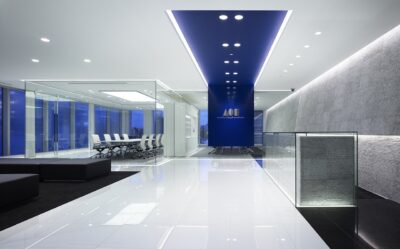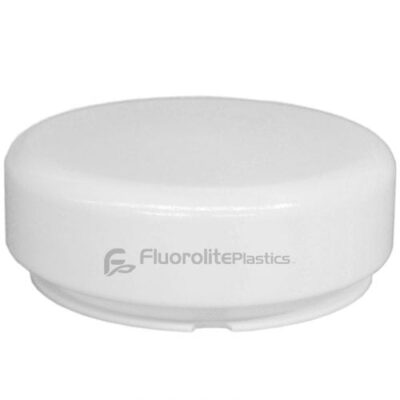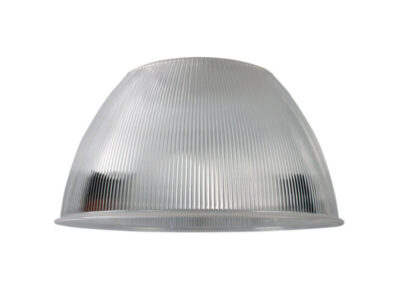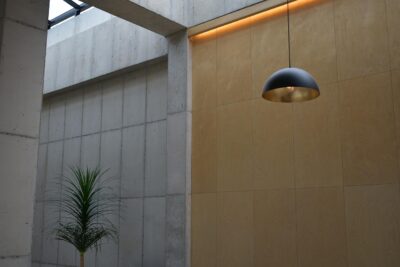
How to Use LED Fixture Covers for Green Building Compliance
How to Use LED Fixture Covers for Green Building Compliance By Aman | Updated on May 14th 2025 Green buildings are no longer a trend—they’re
Home » How to Extend the Life of Your LED Fixture Light Covers
LED fixture light covers might seem like an afterthought, but they actually play a major role in keeping lighting systems efficient, safe, and visually appealing. When these covers are maintained properly, they help preserve the clarity and output of your lighting, reduce energy waste, and delay costly replacements.
Stretching the LED fixture cover lifespan isn’t just good for your maintenance budget—it’s also better for the environment. Less frequent replacements mean reduced plastic waste, fewer materials used, and less labor spent on fixture maintenance.
This guide is for facility managers, industrial maintenance leads, architects, and anyone working with commercial or residential lighting systems. You’ll get real-world, practical tips on how to make your light covers last longer, stay clearer, and work smarter.

The most common materials used in light lens manufacturing include polycarbonate, acrylic, fiberglass-reinforced plastic, and specialized blends that offer UV protection or fire resistance. Each one has different strengths:
LED fixture covers do more than just protect the LEDs from dust and debris. They diffuse light, enhance uniformity, and prevent glare. In healthcare or office environments, these factors are especially critical. A well-maintained cover helps maintain the designed lighting profile.
These aren’t just aesthetics—each application comes with environmental challenges that can shorten the lifespan of the lens if not managed right.
Light fixtures in places like warehouses or kitchens may deal with vibrations, accidental bumps, or pressure during cleaning or replacement. All this adds up over time.
Even though the lens isn’t an electrical component, unstable power can increase heat output from the LED fixture. That heat radiates into the lens, and over time, that repeated stress can degrade the material.
Dust, grease, and chemical buildup cloud light and stress the material. But here’s the thing: some cleaners actually do more harm than good. Stay away from anything ammonia-based or too abrasive.
Use:
In industrial areas, you might need to clean once a month. In homes or office settings, every 2-3 months usually does the trick. It keeps the light output high and extends that LED fixture cover lifespan.
Heat is sneaky. Even if the LEDs run cool, cramped housing or poor airflow traps warmth. Over time, it bakes the lens.
For areas like kitchens or industrial zones, consider passive cooling add-ons or fixtures with open-back designs.
Ever seen flickering lights when the HVAC kicks on? That spike can heat up LEDs quickly.
To avoid this:
Stable electricity = less thermal stress = longer-lasting lenses.
Polycarbonate should be your go-to in:
Acrylic works better in:
Need extra durability? Use UV-treated or fire-rated variants in outdoor or high-risk zones. For healthcare or labs, opt for diffusers that balance visibility with low-glare output.
You can also explore composite lenses that offer layered protection without adding bulk.
These symptoms mean your LED fixture lighting is working overtime and the cover’s past its prime.
If the lens just has buildup or surface haze, a deep clean might be enough. But once the material becomes brittle or cloudy beyond repair, replace it. No point in pushing it past its limit if it’s affecting performance.
In commercial or municipal applications, keep an audit log. That way you can schedule replacements before things fail.
Create a spreadsheet or app-based log of fixture installs, last cleaned dates, and observed issues. Some facilities tie this into their building management software for automated alerts.
A lot of this is preventative. Simple things like not using harsh cleaners or overtightening clips can make a major difference.

Extending the life of your LED fixture light covers isn’t rocket science—it’s just consistent care, smart material selection, and a bit of attention to detail. Whether you manage a massive industrial facility or just want your kitchen LEDs to look fresh for years, it all starts with understanding the stress your lenses face.
Keeping your lenses clear and damage-free also protects your investment in LED lighting. And honestly, it’s less about the gear and more about the habits.
Fluorolite Plastics, a trusted name in the lighting industry for over 45 years, offers durable, high-quality replacement covers for nearly every application—from vapor-tight industrial zones to decorative commercial spaces.
With routine cleaning, smart fixture placement, and proper replacement planning, you’ll get more from every fixture—and fewer headaches from surprise failures.
It depends on the environment. Warehouses or kitchens? Once a month. Offices? Every 2-3 months works fine.
UV exposure is the main cause, especially in outdoor or sunlit indoor areas. Heat and chemical cleaners can also accelerate yellowing.
Yes. Polycarbonate is stronger and impact-resistant but more expensive. Acrylic is clearer but can crack under stress.
Only if they’re ammonia-free and non-abrasive. Otherwise, you risk scratching or degrading the lens material.
If it’s cracked, brittle, warped, or permanently discolored—it’s time to replace it.
Most do, but you should check the fixture’s compatibility with enclosed or sealed covers before installing.
Manufacturers usually print the UV rating or use stickers. Fluorolite Plastics, for example, offers UV-treated covers for both indoor and outdoor use.
Absolutely. Not only do you extend the LED fixture cover lifespan, but custom covers ensure proper fit, seal, and lighting quality.

How to Use LED Fixture Covers for Green Building Compliance By Aman | Updated on May 14th 2025 Green buildings are no longer a trend—they’re

How to Extend the Life of Your LED Fixture Light Covers By Aman | Updated on May 3rd 2025 LED fixture light covers might seem

How to Clean LED Fixtures and Light Covers Safely By Aman | Updated on 30th April 2025 Let’s face it—LED lighting fixtures look sleek, save
Trustindex verifies that the original source of the review is Google. Muy bueno buen servicio buena calidadTrustindex verifies that the original source of the review is Google. I was trying to replace the fluorescent light coverings in my bathroom and I came across this Fluorolite Plastic LLC company online , which turned out to be a heaven sent experience. The customer service was amazing and not to mention the timely response to the email sent about what I needed . Customer service also took the time out to make sure that I was ordering the right product . My whole experience and the product was superb. Loving the light covering ♥️Trustindex verifies that the original source of the review is Google. The parts are great and the employees even better.Trustindex verifies that the original source of the review is Google. Great quality acrylic circles. Not flimsy like some I’ve tried. Material is protected from scratches and other damage well with plastic/paper coating then securely shipped from Fluorolite in thick cardboard. Encountered a shipping error with my order but in-house Customer Service resolved it quickly. Will definitely use Fluorolite again!Trustindex verifies that the original source of the review is Google. It was a very good experience. Customer service, excellent! The product was made with a thicker plastic. Not a cheap, thin one.Trustindex verifies that the original source of the review is Google. Product fit perfectly. Customer service was extremely helpful in working with my measurements and photo of existing light cover, to insure I purchased the right product.Trustindex verifies that the original source of the review is Google. light cover fits perfectly, good service, quick delivery
"We've Got You Covered" and Trace n'Fax are Registered Trademarks of Fluorolite Plastics, LLC. © 2011-2024 All rights reserved Fluorolite Plastics